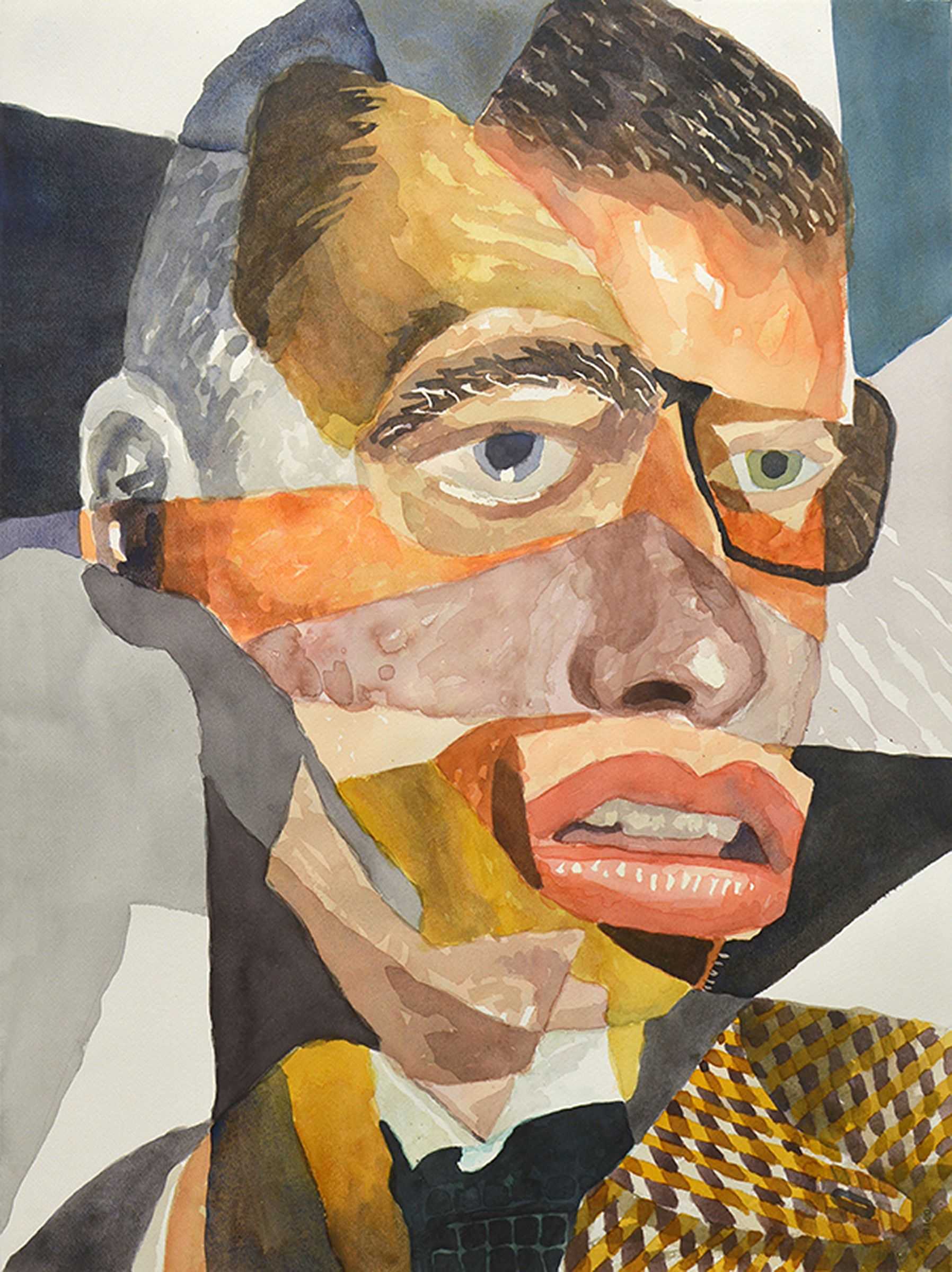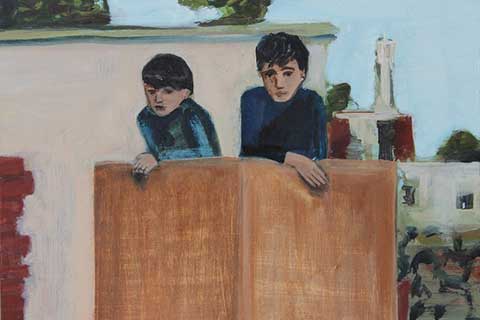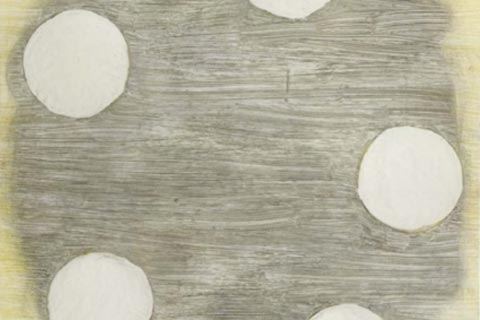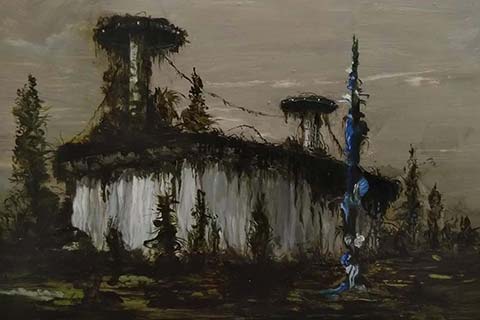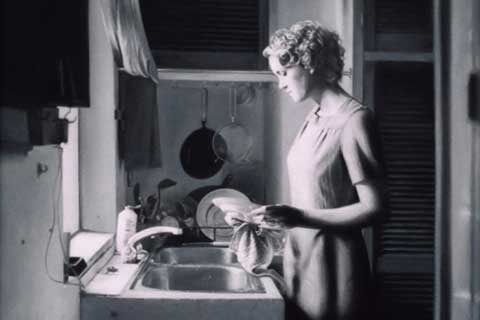David Lock in conversation with Susie Hamilton
Susie Hamilton: Have you always painted the human figure? When did you start painting the fragmented figure?
David Lock: Yes, although at Reading Uni I went through a period of abstraction, but during my MA at Goldsmiths the figure came back.
I began layering different body parts from magazines on to acetate film. Later I began making collages as I wanted to physically engage with the magazine itself more directly, but the collages were always an aid towards painting.
SH: Is your work exclusively to do with masculinity? Do you ever paint women?
DL: Yes I think so. I think it is endlessly absorbing. It’s where my interest lies. I have painted women, but really very few and far between. Right now i’m interested in the specificity of the male. You focus on one thing and you realise how much breadth it gives you. Also it’s about taking up a position in culture.
SH: In what way is your work to do with lack or loss?
DL: It is quite central to my practice. When making a collage you choose a fragment, in my case a body part, but there is also the part that’s discarded, and left behind. When the collage is constructed I think of all the lost totalities that these incomplete fragments where once a part of, and I think this runs through the work.
Furthermore as agents of discourse, I like to see my ‘Misfit’ paintings as desiring subjects, fed by their unconscious desires which can never be fulfilled. Drawing from Lacan, I like how the subject is de-centred and split, lacking, divided against itself as the effect of a loss and i’m playing off that.
SH: You make collages, or photomontages, from magazine images. Which magazines do you choose and is it important for the viewer to know these sources?
DL: I’m interested in men’s fashion magazines, advertisements and weekend supplements, from anywhere really. I am interested in the contemporary standards of what constitutes the ideal, and how masculinities are produced and reproduced in the mass-media.
It’s not important to me that the viewer knows my sources really, as my paintings are about difference and it’s all there in the paintings.
SH: Do you see the collages themselves as finished artworks or are they just a means to an end. Are they like sketches or studies for the final painting or are they complete in themselves?
DL: They do stand alone. I don’t show them, they are as you say a means to an end. They are an entry point for me into making a painting. I have to edit from the collage quite a bit, and I often have to simplify the information, to make a painting that works.
SH: What is your view of human identity and how does this relate to your work?
DL: In relation to my art practice, my thinking is not of identity, as going back to Lacan i’m more interested in the subject as a social construction.
It’s much more fluid, and unmoored than identity which seems fixed and stable. Instead it places the emphasis on the language and culture we learn, from which we internalise meanings.
In this way I see the ‘Misfit’ paintings as playing with the concept of subjects constituted in the structural edifice or language of the big Other. Which is the language and culture which predetermines the subject, and the one it has to find a way to fit into both consciously and unconsciously on condition that it reproduces its signifying practices. For instance we can wear masks to present different faces to the world, and often we’re not even aware of the masks we are wearing.
SH: Could you say something about your treatment of space in your paintings. How does the space around the figure relate to the representation of the figure?
DL: When constructing a collage or painting, I am usually trying to get behind the image, so it exists in concrete space. With the larger compositions I am drawing from Mannerist painting, in distorting the figure. The space is usually quite shallow, but I like to imagine that they are caught in a moment of becoming, with these different planes coming together. The space the figures are depicted in is purposefully ambiguous, with disruptions in scale and place to evoke the uncanny.
SH: When I look at your work I think of damage and repair, or dismantling and reassembling. Is this relevant? If so I wonder if you could expand on it.
DL: Yes, absolutely. With regard to dismantling and reassembling, when collaging i’m seeking to divide and disrupt the subject matter. The images of masculinities from mainstream mass-media which I collage from are in the main cultural constructions, and my paintings and collages are assemblages of these visual signifiers.
I’m playing with how open, varied, contradictory and fluid masculinities can be.
There is a political agency to this, in that with the ‘Misfits’ i’m creating portraiture characterised by a decentralising, non-hierarchical space that seeks to ask questions about difference. In this way I see my work as rhizomatic, and contingent with multiple entryways and exits and taking its own line of flight.
Of damage and repair, it interests me that the ‘Misfits’ are constructed by images already out there in the world. Like Frankenstein’s monster they carry attributes of a former life and for me that makes them vulnerable, yet also strong. Their strength of character comes out of this.
I want to keep it discursive, and open so it offers me a multiplicity of subject positions, and ultimately, i’m interested in how that inscribes itself on to the contemporary masculine body.
SH: Which artists are important to you?
DL: Many numerous artists, but amongst them Bronzino, Manet, Picasso, Chantal Joffe, Lisa Yuskavage, Neo Rauch, John Stezaker, George Condo, David Altmejd, Marlene Dumas, and RB Kitaj.



